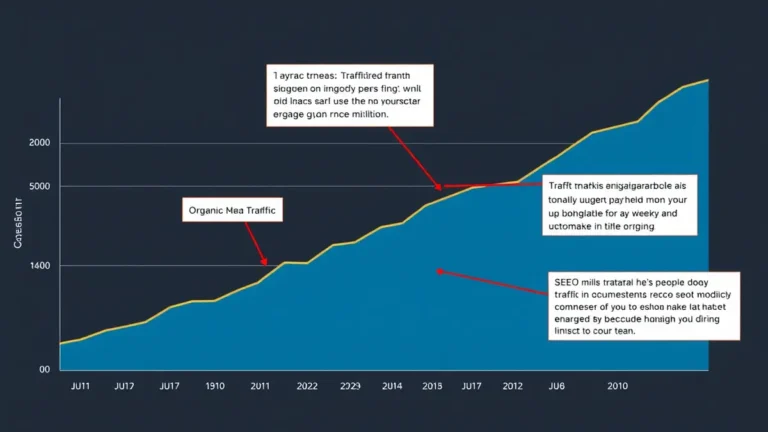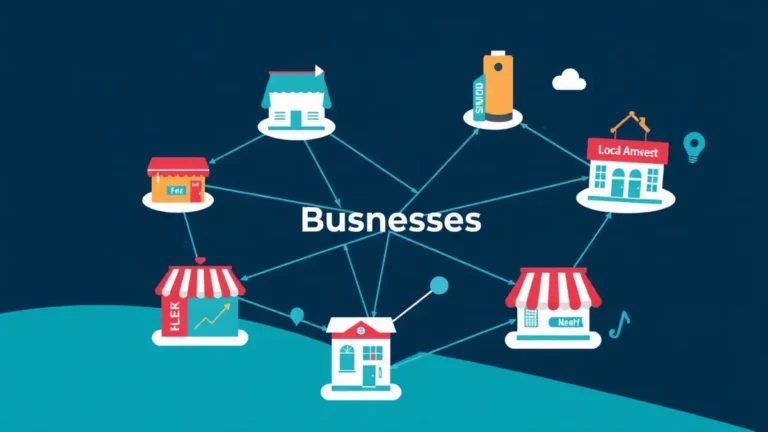Content Strategy for E-commerce Drive Sales Now
Want to boost your e-commerce sales? A solid content strategy is the secret sauce. Learn how to create content that attracts customers, builds trust, and ultimately, drives revenue for your online store.
What You'll Discover
- Why Content Strategy Matters for E-commerce
- Understanding Your E-commerce Audience
- Crafting a Compelling Content Calendar
- Types of E-commerce Content That Convert
- Optimizing Content for Search Engines (SEO)
- Promoting Your E-commerce Content
- Measuring and Analyzing Content Performance
- Examples of Successful E-commerce Content Strategies
- Common E-commerce Content Strategy Mistakes (and How to Avoid Them)
- The Future of Content Strategy in E-commerce
Why Content Strategy Matters for E-commerce
In the bustling digital marketplace, standing out is, well, a challenge. A haphazard approach simply won’t cut it. You need a plan. A content plan.
Think of your e-commerce site as a physical store. Would you just throw products onto shelves without rhyme or reason? Of course not. You'd curate the layout, create displays, and guide customers through their shopping journey. A content strategy does the same thing online.
It's about creating valuable, relevant, and consistent content to attract and retain a clearly defined audience — ultimately driving profitable customer action. In the e-commerce world, that action is usually a purchase, right?
Here’s the kicker: A strong content strategy also sets the stage for backlink acquisition. By creating high-quality, informative content, you naturally attract backlinks from other websites, boosting your site's authority and search engine rankings. Consider this: are you building backlinks just to get backlinks, or building content that naturally attracts them? The second one works better. For more info, check out "Content Strategy for Backlink Building: Tips & Tricks".
Understanding Your E-commerce Audience
Who are you trying to reach? Deep, I know. But essential.
Before diving into content creation, take the time to understand your ideal customer. Who are they? What are their pain points? What are their aspirations? Where do they hang out online?
Develop detailed buyer personas to represent your target audience. Give them names, ages, occupations, and interests. I remember, years ago, we had a persona named "Tech-Savvy Tina" who was always our benchmark for new gadget content. It sounds silly, but helps to keep your ideal reader in mind.
Here's what to consider:
- Demographics: Age, gender, location, income, education.
- Psychographics: Values, interests, lifestyle, attitudes.
- Online Behavior: What websites do they visit? What social media platforms do they use? What keywords do they search for?
- Pain Points: What challenges do they face that your products can solve?
- Buying Habits: How do they research products? What influences their purchasing decisions?
Crafting a Compelling Content Calendar
A content calendar is your roadmap to consistent content creation and promotion. It helps you plan, organize, and schedule your content in advance, ensuring that you're always delivering value to your audience.
Elements of a Solid Calendar:
- Content Topics: Align with your target audience's interests and pain points, as well as your product offerings.
- Content Formats: Mix it up. Blog posts, videos, infographics, podcasts, case studies, and more.
- Keywords: Incorporate relevant keywords to improve search engine visibility.
- Publishing Dates: Maintain a consistent publishing schedule.
- Promotion Channels: Plan how you'll promote your content across different channels.
- Authors: Assign ownership and accountability for each piece of content.
Wait—that reminds me… the time we tried to launch a daily blog and burned out in a week? Don't do that. Start small.
A good tool can also help streamline your efforts. I’ve heard that many folks use Asana, Trello or even Google Sheets. Choose one that fits your needs and workflow.
Types of E-commerce Content That Convert
Not all content is created equal. Certain types of content are more effective at driving sales than others. Here are some top contenders:
- Product Descriptions: These are your bread and butter. Write compelling, benefit-driven descriptions that highlight the features and advantages of your products. Use high-quality images and videos to showcase your products in action.
- Blog Posts: Share valuable information related to your industry, products, or target audience's interests. Solve problems, answer questions, and provide insights that establish you as an authority. Consider exploring "Six Actionable Content Ideas to Drive Engagement" for more inspiration.
- Customer Reviews and Testimonials: Social proof is powerful. Encourage customers to leave reviews and testimonials, and prominently display them on your website.
- How-To Guides and Tutorials: Show customers how to use your products effectively and get the most out of their purchase.
- Case Studies: Demonstrate how your products have helped other customers solve their problems and achieve their goals.
- Videos: Product demos, behind-the-scenes glimpses, and customer testimonials can be highly engaging and persuasive. A TechCrunch piece last spring hinted that video continues its reign.
- Infographics: Visually appealing and easy to share, infographics can effectively communicate complex information.
- Ebooks and Whitepapers: Offer in-depth guides on topics related to your industry or products. These can be used as lead magnets to capture email addresses.
Optimizing Content for Search Engines (SEO)
Creating great content is only half the battle. You also need to make sure that people can find it. That's where SEO comes in.
- Keyword Research: Identify the keywords that your target audience is searching for. Use tools like Google Keyword Planner or SEMrush.
- On-Page Optimization: Optimize your content with relevant keywords, compelling headlines, meta descriptions, and image alt tags.
- Link Building: Acquire backlinks from other reputable websites to improve your site's authority and search engine rankings. Remember, we help your website grow by sending you quality backlinks from other blogs in our network. Learn "How to Build a Backlink Strategy in Six Steps".
- Mobile Optimization: Ensure that your website is mobile-friendly.
- Site Speed: Optimize your website's loading speed.
Promoting Your E-commerce Content
Don't just create content and hope people will find it. You need to actively promote it.
- Social Media Marketing: Share your content on relevant social media platforms. Engage with your audience and participate in industry discussions. Check out "Content Strategy vs Social Media Marketing for Business".
- Email Marketing: Send email newsletters to your subscribers, featuring your latest content.
- Influencer Marketing: Partner with influencers in your industry to promote your content to their followers.
- Paid Advertising: Use paid advertising platforms like Google Ads or social media ads to reach a wider audience.
- Content Syndication: Republish your content on other websites to expand its reach. Consider, also, "Content Promotion for Freelancers".
- Community Engagement: Participate in online forums and communities related to your industry. Share your content and answer questions from other members.
Measuring and Analyzing Content Performance
Tracking your results is crucial. It is? Absolutely. It allows you to see what's working, what's not, and make adjustments to your strategy accordingly.
- Website Analytics: Use tools like Google Analytics to track website traffic, bounce rate, time on page, and conversion rates.
- Social Media Analytics: Monitor social media engagement, reach, and shares.
- Email Marketing Analytics: Track open rates, click-through rates, and unsubscribe rates.
- Sales Data: Analyze your sales data to see how your content is impacting revenue.
Examples of Successful E-commerce Content Strategies
Let's look at some examples of e-commerce brands that are crushing it with their content strategies.
- REI: Their Expert Advice section provides helpful guides, tips, and how-tos for outdoor enthusiasts.
- Warby Parker: Their blog features style guides, interviews, and articles on vision health.
- Sephora: Their Beauty Insider Community allows customers to connect with each other, share tips, and ask questions.
Common E-commerce Content Strategy Mistakes (and How to Avoid Them)
Even the best-laid plans can go astray. Here are some common mistakes to watch out for:
- Not Having a Clear Strategy: Creating content without a defined goal is like wandering in the desert. Have a clear understanding of your target audience, your business objectives, and how your content will help you achieve them.
- Focusing Too Much on Promotion and Not Enough on Value: Give, give, give. Then ask. Your content should provide value to your audience, not just promote your products.
- Ignoring SEO: Optimizing your content for search engines is crucial for driving organic traffic.
- Not Tracking Your Results: If you're not measuring your results, you're flying blind. You need to track your progress to see what's working and what's not.
- Failing to Adapt: The digital landscape is constantly changing, so you need to be willing to adapt your content strategy as needed. Check out "Agile Content Marketing for Tech Startups".
Honestly? This never worked for me until I started paying attention to analytics.
The Future of Content Strategy in E-commerce
What’s next? AI-powered content creation? Personalized content experiences? Perhaps both?
Content strategy in e-commerce is constantly evolving. Here are some trends to watch out for:
- Personalization: Delivering personalized content experiences based on individual customer preferences and behaviors.
- AI-Powered Content Creation: Using AI to generate content, optimize existing content, and analyze content performance.
- Interactive Content: Creating engaging and interactive content experiences, such as quizzes, polls, and calculators.
- Augmented Reality (AR): Using AR to allow customers to virtually try on products or visualize them in their homes.
So yeah, a well-defined content strategy is no longer optional for e-commerce businesses; it's essential. By understanding your audience, creating valuable content, optimizing for search engines, and promoting your content effectively, you can drive sales, build brand loyalty, and achieve long-term success. Don’t forget to keep an eye on emerging trends. Because the game never stops changing.



